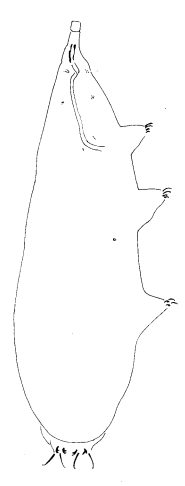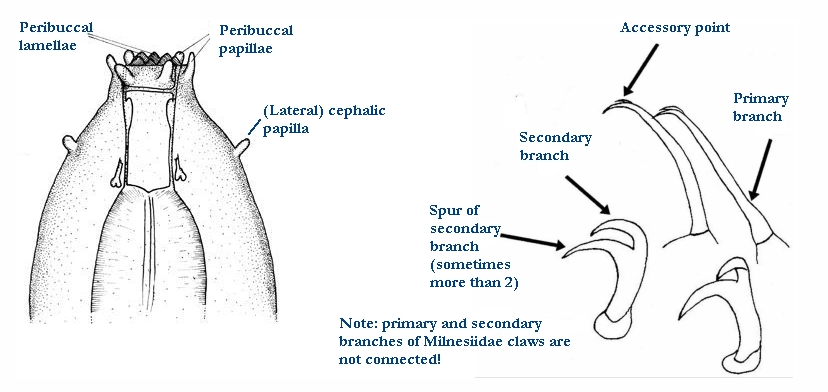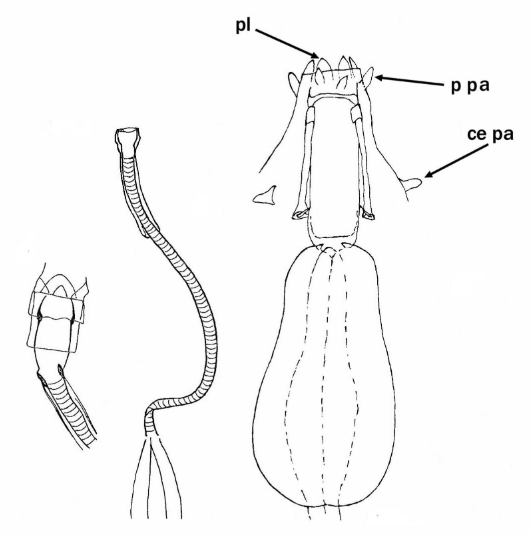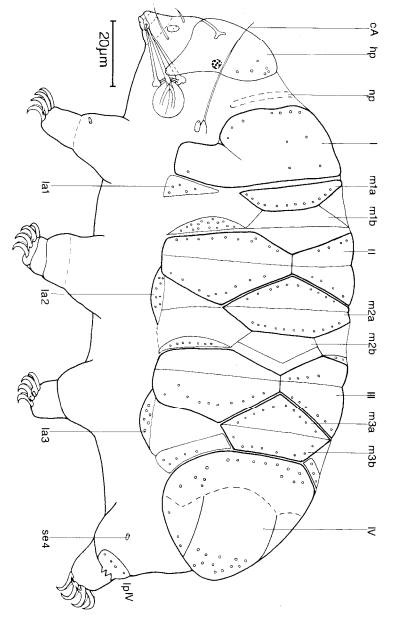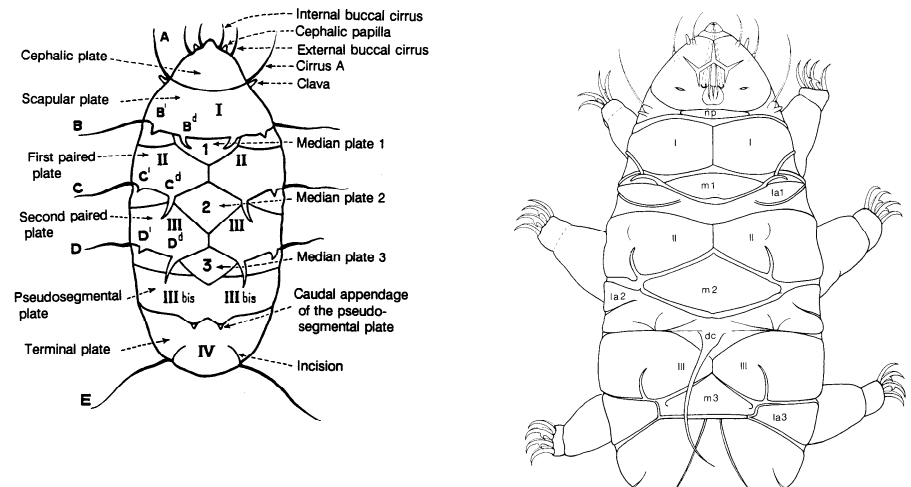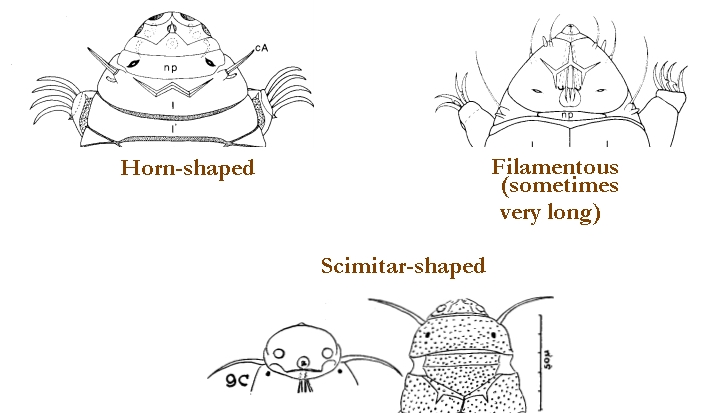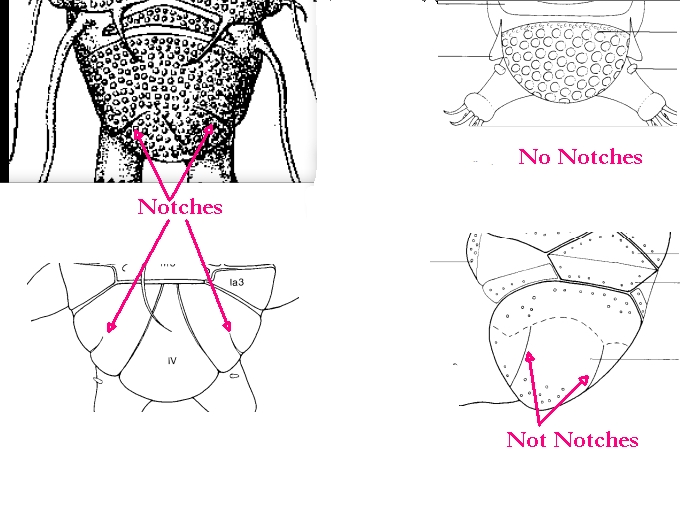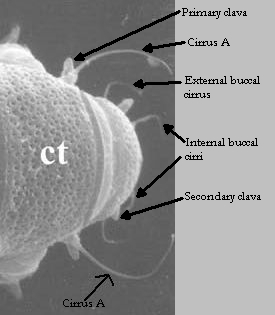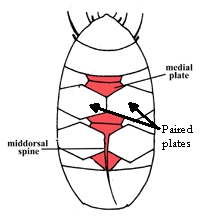Apochela, from Schuster et al. 1980: “…with cephalic papillae and claws with the primary and secondary branches distinctly separate.”
Apochela, from Bertolani et al. 2014: “Eutardigrada having claws with completely separated primary and secondary branches; papillae around the mouth (peribuccal papillae) and 2 lateral papillae on the head (cephalic papillae); elongated pharyngeal bulb completely without placoids.”
Milnesiidae, from Schuster et al. 1980: “…which has cephalic papillae and has claws with well-separated primary and secondary branches…”
Genus description from Horning et al. 1978: “Head without normal buccal lamellae, but with 1 or more membranous flaps constituting a buccal opening; without parabuccal papillae but with 2 head papillae. Mouth tube simple, constricted basally, without stylets or stylet supports. Pharyngeal tube elongate, without placoids. Double claws unequal in size, but symmetrical about median plane of leg. Cuticle essentially smooth, with only occasional minute, pit-like structures of unknown significance.”
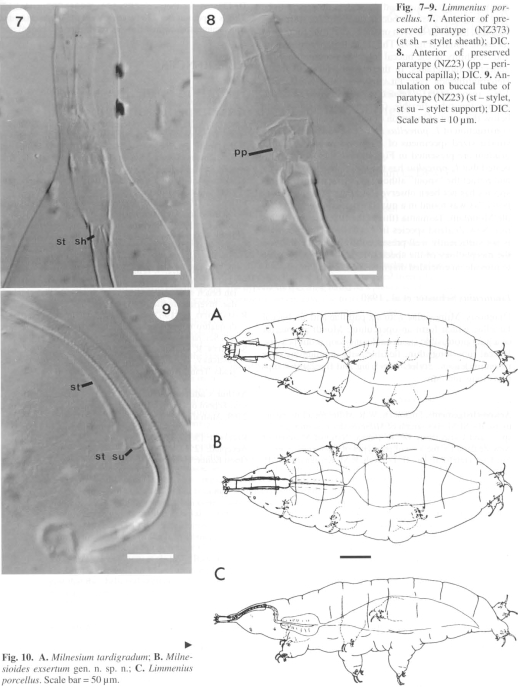
Citations:
Bertolani R, Guidetti R, Marchioro T, Altiero T, Rebecchi L, Cesari M. 2014. Phyloeny of Eutardigrada: New molecular data and their morphological support lead to the identification of new evolutionary lineages. Molecular Phylogenetics and Evolution. 76: 110-126.
Horning DS, Schuster RO, Grigarick AA. 1978. Tardigrada of New Zealand. New Zealand Journal of Zoology. 5: 185-280.
Schuster RO, Nelson DR, Grigarick AA, Christenberry D. 1980. Systematic criteria of the Eutardigrada. Transactions of the American Microscopical Society. 99: 284-303.
